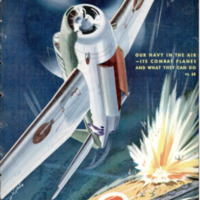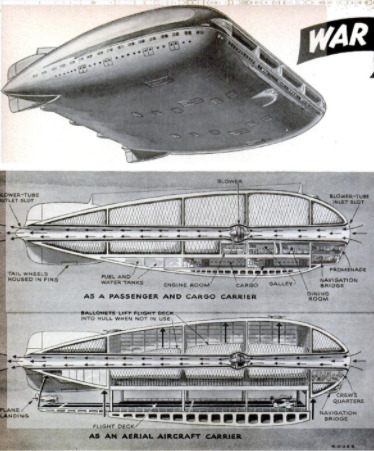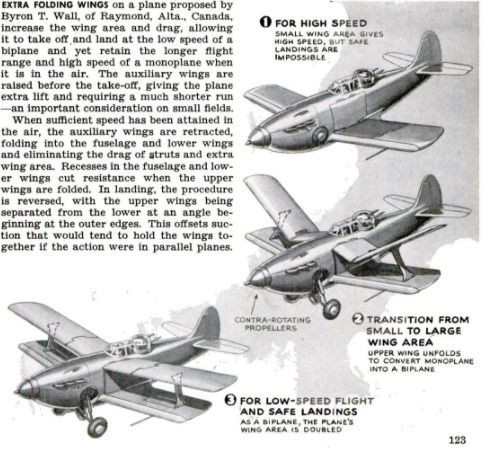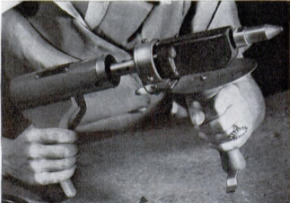War Ideas
Item
-
Title (Dublin Core)
-
War Ideas
-
Article Title and/or Image Caption (Dublin Core)
-
War Ideas
-
extracted text (Extract Text)
-
FLYING AIRCRAFT CARRIERS and huge troop and
cargo air transports with a range of 8,000
miles have been designed by Horace Chap-
‘man Young and Eric Langlands as combina-
tions of airship and airplane. The Alrwing,
as the craft is called, is bullt as a flying
wing with space within its single-wing body
for helium, fuel, crew, and pay load and tun-
nels in which propellers or blowers operate.
This wind-tunnel operation is based on the
principle that the plane will both pull and
push itself forward—pulling through suction
caused by a semivacuum created in front,
and driving by exhaust pressure at the rear.
The helium gives it additional lifting power,
making a total load of 63 tons possible for a
ship 250 feet square and 62 1/2 feet in height. |
A troop transport of the same size would |
‘accommodate 300 soldiers fully equipped for
service abroad. The aircraft carrier is de-
signed with a flight deck 180 feet wide by
200 feet long that could be lowered below
the hull to allow 12 fighter planes to take off
and land.
Maximum speed is estimated at 240 miles |
an hour, take-off speed at 30, and landing
speed at 20. The Airwing could cruise 270
hours at 30 miles an hour.
TWO-MAN PARATANKS
small enough to be trans-
ported in cargo planes
are proposed by Martial
and Scull, industrial de-
signers, to provide a
quick means of landing
mechanized equipment
behind enemy lines. The
all-welded tank at right
is triangular in shape
with two forward wheels
and a track-type runner
in the rear. It carries a
37 - millimeter antitank
gun coupled with a heavy
‘machine gun. The occu-
pants also have subma-
chine guns and grenades.
EXTRA FOLDING WINGS on a plane proposed by
Byron T. Wall, of Raymond, Alta., Canada,
increase the wing area and drag, allowing
it to take off and land at the low speed of a
biplane and ‘yet retain the longer flight
range and high speed of a monoplane when
it is in the air. The auxiliary wings are
raised before the take-off, giving the plane
extra lift and requiring a much shorter run
—an important consideration on small fields.
When sufficient speed has been attained in
the air, the auxiliary wings are retracted,
folding into the fuselage and lower wings
and eliminating the drag of struts and extra
wing area. Recesses in the fuselage and low-
er wings cut resistance when the upper
wings are folded. In landing, the procedure
is reversed, with the upper wings being
separated from the lower at an angle be-
ginning at the outer edges. This offsets suc-
tion that would tend to hold the wings to-
gether if the action were in parallel planes.
-
Language (Dublin Core)
-
eng
-
Date Issued (Dublin Core)
-
1943-02
-
pages (Bibliographic Ontology)
-
122-123
-
Rights (Dublin Core)
-
Public Domain (Google Digitized)
-
Archived by (Dublin Core)
-
Matteo Ridolfi
-
Marco Bortolami (editor)
 Popular Science Monthly, v. 142, n. 2, 1943
Popular Science Monthly, v. 142, n. 2, 1943










